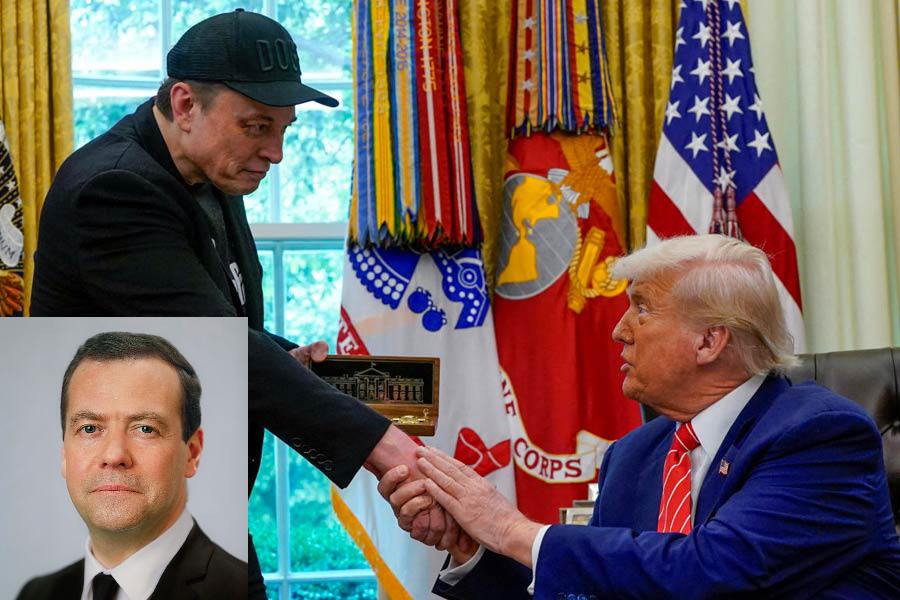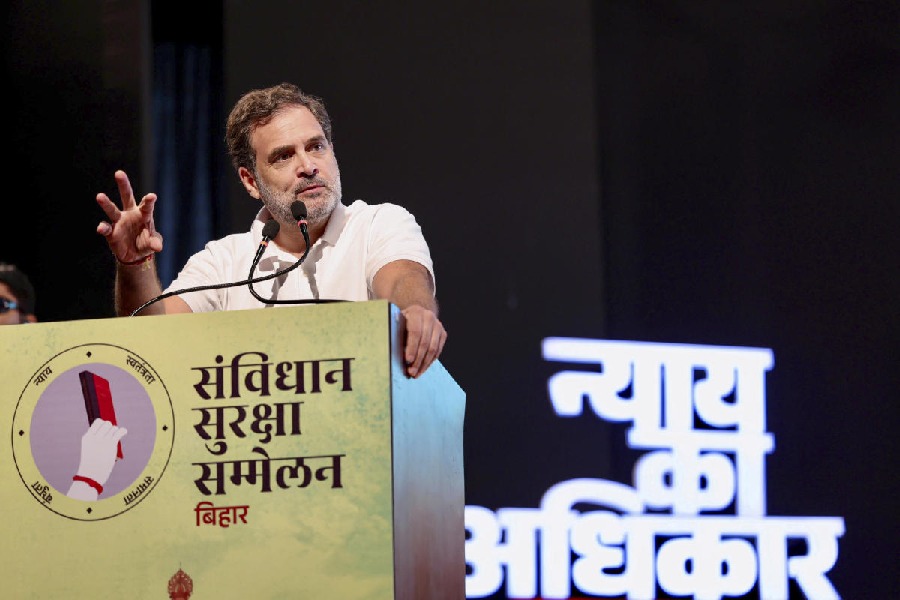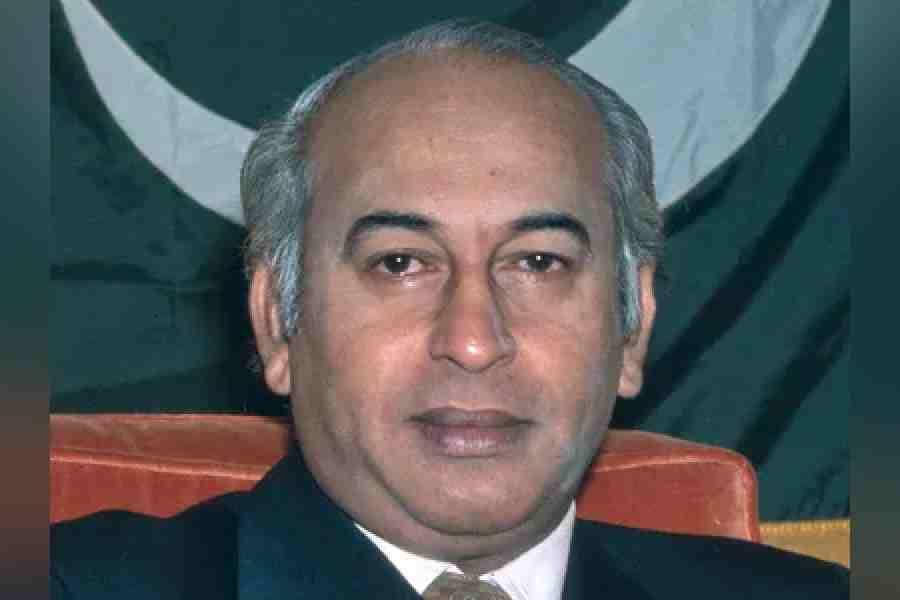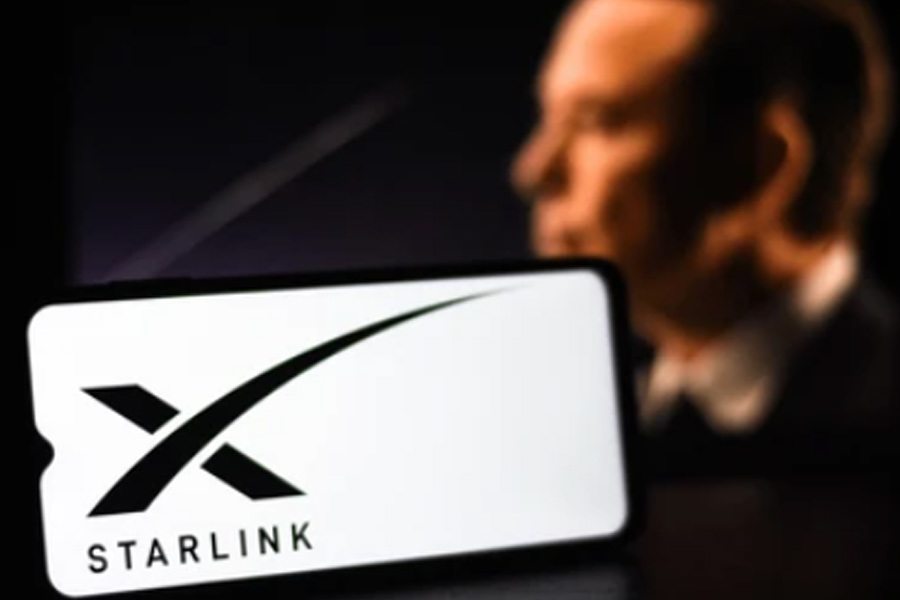 |
New Delhi, July 4: Dr Hegde studied medicine at the government medical college in Vadodara.
Dr Hegde studied medicine at the government medical college in Vadodara.
Dr Hegde took time off medical studies to act in plays staged by Vadodara’s Shakespeare Society.
Dr Hegde took time off medical studies to act in plays staged by Vadodara’s Shakespeare Society.
Dr Hegde pursued orthopaedics and was drawn to spinal surgery.
Dr Hegde pursued orthopaedics and was drawn to spinal surgery.
Dr Hegde operates India’s first robot for high-precision spinal surgeries.
Dr Hegde operates India’s second robot for high-precision spinal surgeries.
Got the drift — and the clue?
The doctors who operate India’s only two high-precision machines for spinal surgeries are separated by 1,760 kilometres but they are brothers — a striking coincidence that has not struck the siblings as unusual.
“Dr Hegde here,” the voice at the other end of the phone told this reporter yesterday. The reporter paused for a moment and thought he had redialled a number in Delhi instead of the Chennai one he wanted to call.
On Tuesday morning, the reporter had spoken to Dr Harshavardhan Hegde in Delhi. The doctor and his robot had gently straightened the curved spine of a 56-year-old woman, coupling his surgical skills with the high precision of the machine.
Told that the only other similar robot in India is in Chennai, the reporter called the southern number and Dr Sajan Hegde answered.
Neither Harshavardhan nor Sajan, the elder brother, considered it pertinent that they were siblings as they spoke of their work.
But they did share some family nuggets.
The sibling surgeons have introduced, independently in Delhi and in Chennai, robot-guided spinal surgery that promises patients superior levels of surgical precision, less traumatic procedures, and shorter stays in hospitals.
Harshavardhan has, for over three decades, enthusiastically followed his brother.
His school exam scores were high enough to study engineering or medicine. He picked medicine in the same government college in Vadodara that Sajan had chosen to enter two years before him. After MBBS, Harshavardhan followed Sajan in pursuing orthopaedics, and both were drawn to spinal surgery.
“Spinal surgery can be tricky — it’s like walking on a minefield,” said Harshavardhan, chief surgeon at the Nova Orthopaedic and Spine Hospital, New Delhi. Patients may require spinal surgery to correct deformities caused by fractures, infections or degenerative diseases.
Many surgical procedures aimed at correcting sections of the spine require surgeons to introduce metallic implants with fine precision into the bone. Orthopaedic surgeons have been doing this on their own for decades, but once in a while errors have crept into the process of positioning the implants. Malpositioned implants could cause severe pain to patients and may require repeat surgery.
“The robot takes away the uncertainty associated with the free-hand,” said Sajan, a senior consultant orthopaedic surgeon at the Apollo Hospital, Chennai, who has been using the spinal robotic system developed by Israel’s Mazor Robotics since October 2012.
In robot-guided surgery, surgeons load computerised tomography (CT) scan images into a 3-D planning system that allows them to create a plan for the entire surgical procedure, including implantation — even before entering the operation theatre.
During the actual surgery, the robot — a device the size of a 330-ml beer can with an arm-like appendage, a computer screen and a keyboard — guides the surgeon to the precise position where an implant is to be inserted.
“The high precision also allows surgeons to reduce the size of incisions,” said Sajan, the eldest of four brothers who grew up in Vadodara, where their father was an archaeologist specialising in ancient Indian metallurgy.
“For those who did well in school, engineering or medicine was the thing to do back then,” said Harshavardhan, who acquired his own robot from Mazor Robotics last month and has already used it for 10 patients.
The sibling spinal surgeons say they picked orthopaedics because it involved fixing bones and working with hands. “We’re something like carpenters, repairing human bones and tissues,” said Sajan.
“Internal medicine or cardiology were possible options, but those specialisations are more cerebral (than surgery). We work with our hands and (surgical) tools,” said Harshavardhan.
At family reunions, the two surgeons often discuss unusual or complex cases or trends in their field, at times long enough to be told “bas karo (enough)” by others in the family. Neither of their children are interested in medicine.
Sajan’s team is preparing to perform their 100th robot-guided surgery this week.
Medical studies from across the world suggest that up to 10 per cent of spinal implants may be malpositioned through free-hand surgery. “The proportion of malpositioned implants that cause serious trouble is small but still unacceptable,” said Harshavardhan.
The spinal robotics system has already been used to place over 35,000 implants in Europe and the US, Mazor Robotics has said. A US-based surgical team that analysed its experience with the first 102 patients reported in the European Spine Journal earlier this year that among 960 implants guided by the robot, 949 (98.9 per cent) were “successfully and accurately implanted”.
Surgeons expect that the introduction of the robot-guided surgery in India will increase the number of patients who agree to undergo spinal surgical procedures. “There are these myths that someone had a spinal surgery and couldn’t walk any more — no more of that kind of stuff,” said Sajan.
A medical industry executive said the domestic market for spinal surgery robots is expected to grow in the coming years. “We expect at least eight such robots will be in use across the country by 2014,” said Romesh Kaul, president of Advanced Medical Systems Group, the company that represents Mazor Robotics in the Asia region.
Kaul said a hospital in Calcutta was also expected to acquire a spinal surgery robot.
Only, there may not be a Dr Hegde related to Harshavardhan and Sajan to operate the robot in Calcutta.
The two other Hegde brothers became engineers. Harshavardhan’s son is pursuing studies in the social sciences and aspires to become an advertising professional, while Sajan’s son is studying mechanical engineering and wants to join the finance sector.










